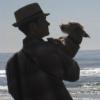-
Welcome to the eG Forums, a service of the eGullet Society for Culinary Arts & Letters. The Society is a 501(c)3 not-for-profit organization dedicated to the advancement of the culinary arts. These advertising-free forums are provided free of charge through donations from Society members. Anyone may read the forums, but to post you must create a free account.
Stomping Through the "Savoy" (2007–2008)
-
Similar Content
-
- 486 replies
- 105,015 views
-
- 142 replies
- 78,539 views
-
- 15 replies
- 3,715 views
-
-
Recently Browsing 0 members
- No registered users viewing this page.





Recommended Posts